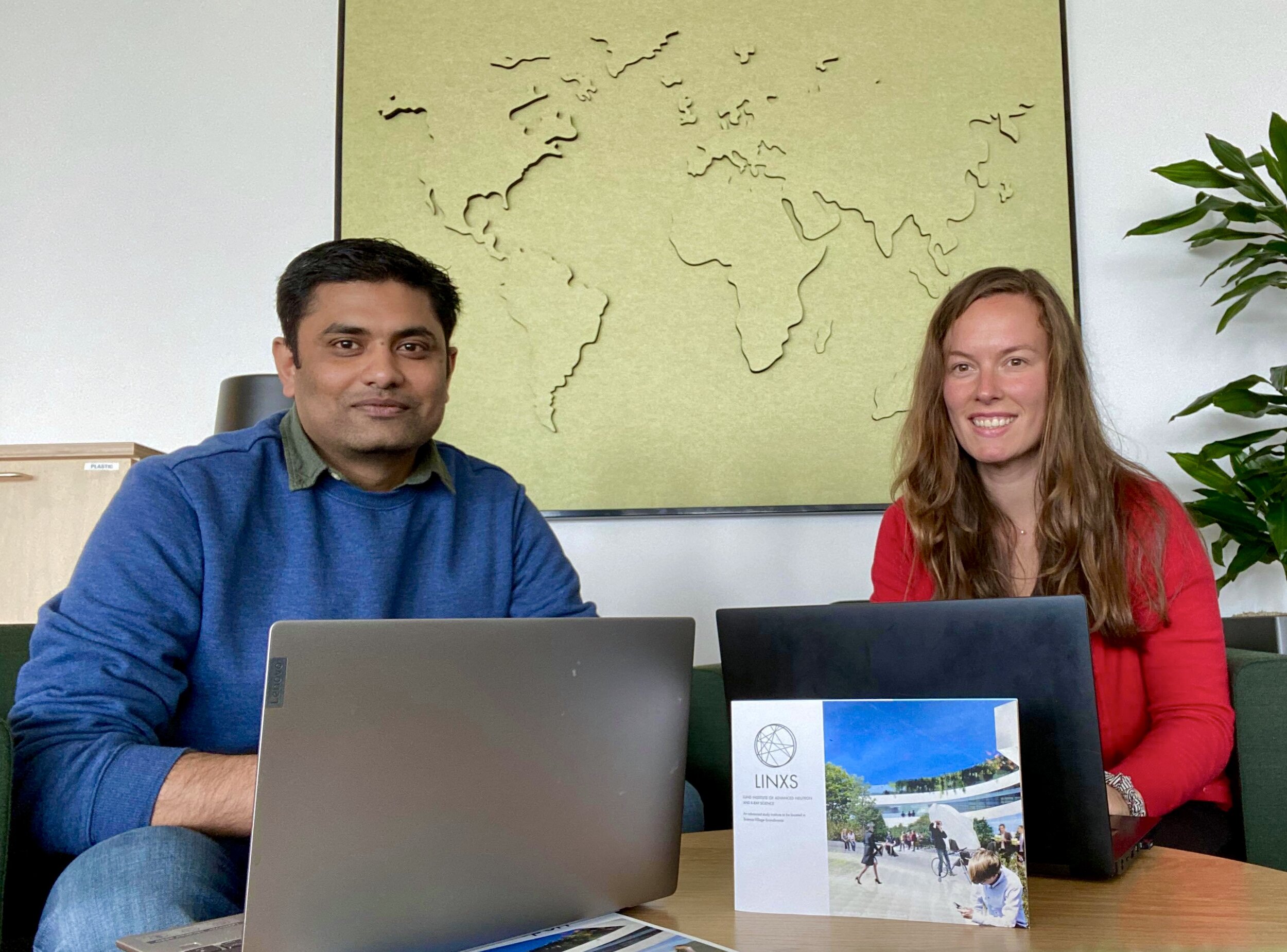LINXS Webinar Series, Let’s Dive into the Atoms, continues
LINXS is launching a new set of webinars in its webinar series, Let’s Dive Into the Atoms. The new webinars start in mid-October and go on to Christmas.
– We want to develop the concept, and include both specific and more general information that can be of use to researchers who are interested in using x-rays and neutrons, says Anurag Kawde, webinar moderator and post-doc at LINXS.
Anurag Kawde and Veronica Lattanzi, moderators of the LINXS webinar series, Let’s Dive Into the Atoms!
Like the previous webinars, the upcoming lectures will have an educational focus and a hands-on approach. They will include talks from researchers from a range of different fields such as soil science, archeology, condensed matter and life sciences. The aim is to attract researchers from different disciplines, and to create an understanding of how they can use x-rays and neutrons in their own research.
– We learned from our last webinar round that the audience wants to hear more on how methods using xrays and neutrons can be applied to different scientific fields both in academia and private sectors. There is high interest for lectures that can provide insights on data analysis, sample preparation, theoretical and practical aspects behind the different techniques, says Veronica Lattanzi, PhD-student at Biochemistry and Structural Biology at Lund University, LINXS board member, and one of the moderators of the webinars.
Beamline proposals and presentations of large scale research facilities
The focus on how to write a beamline a proposal will be further developed.
– There are many questions on how to do this well. We noticed that this was a topic where there was an urge to find out more. You really need experience, but if we can help people to avoid common pitfalls that is a good thing, says Anurag Kawde.
One idea is to develop a do’s and don’ts for beamline proposals with good tips and advice.
Another aspect Anurag Kawde and Veronica Lattanzi want to include is presentations of some of the large scale research facilities in Europe. The aim is to highlight different types of beamline machinery, regulations and various functions specific to the facilities.
– What can you expect from visiting a specific facility? What are the strong areas? It can be very hard to find this information online. I learnt this over time, even though I worked at the European Synchrotron Radiation Facility. You usually have to contact people to understand how their machinery work. We hope these seminars will give people a better insight, and more of a head start , concludes Anurag Kawde.
The webinars are free to attend and open to all researchers from around the world. You do not need any in-depth knowledge of x-rays and neutron methods.
The programme for the webinars will be published over the next coming weeks.

